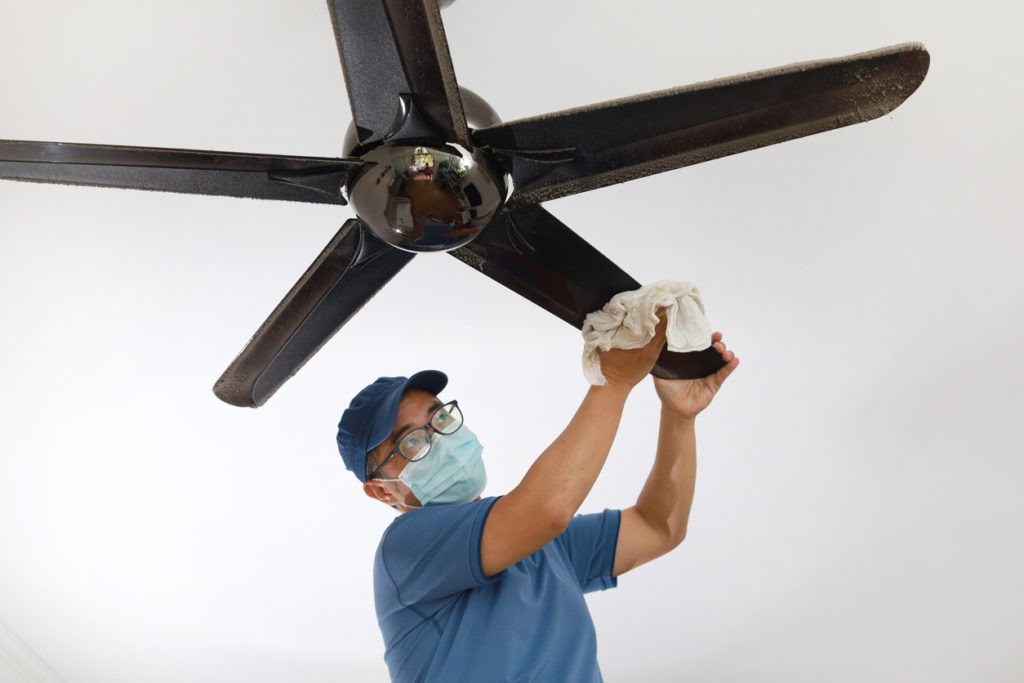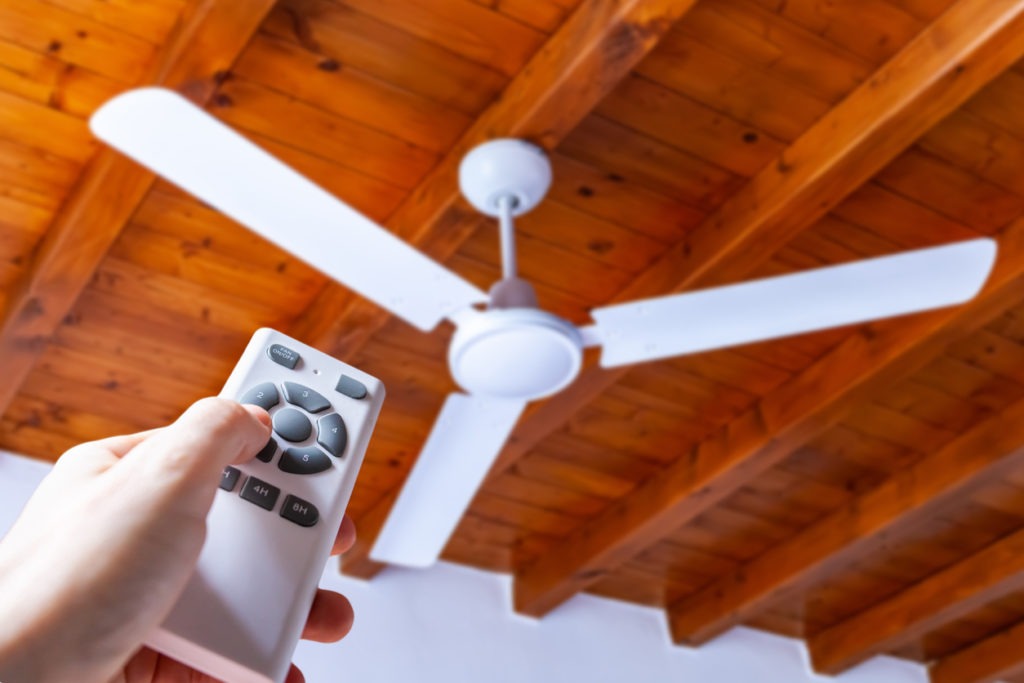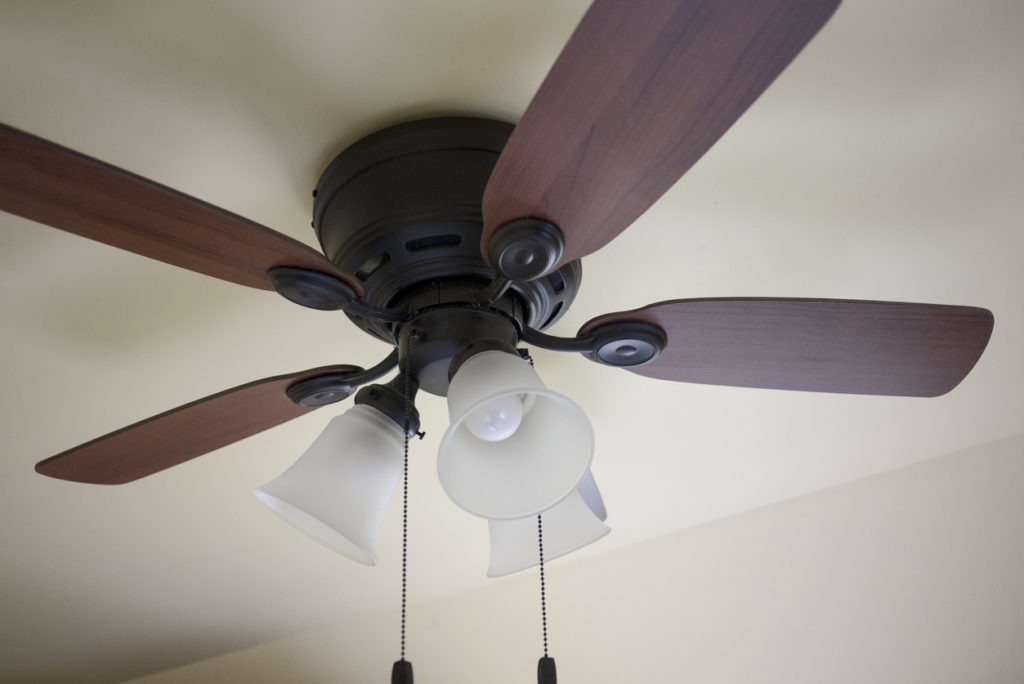A ceiling fan is an excellent option to beat the room’s heat. Perhaps you’re looking to save energy costs during the summer, or maybe you want to ensure your study or home office always has a pleasant temperature. A new ceiling fan is the ideal simple upgrade for the home, whether you want to improve the aesthetics of a room or you need to improve airflow in a smaller space. The cost of air conditioning may seem challenging in this difficult economic climate. A ceiling fan is probably your best choice if you want to keep your place cool without spending too much money.
However, choosing the ideal fan might be challenging if you aren’t familiar with the many options available regarding kind, brand, style, and price. Let’s take a closer look at some things you should consider when selecting a fan for your needs.
Benefits of a Ceiling Fan
Nobody enjoys being in a home that is stuffy and uninviting. Ceiling fans are an effective way to introduce fresh air into your home or business. They will make your house a haven of warmth and comfort throughout the year. Here are the benefits that you can get by having a ceiling fan.
- Make sure your house is well-ventilated – Ceiling fans assist in keeping the room at a comfortable temperature. Your ceiling fans should rotate counterclockwise during the summer and back in the correct direction once winter rolls around.
- Enjoy the steady breeze – Installing a ceiling fan can significantly reduce indoor temperature. You can keep your home cool and inviting by using a fan often.
- Reduced costs for utilities – Ceiling fans save money and energy. You can get up to an 8-degree temperature drop by turning on your fan. That should have a significant impact on your utility costs.
- Enhanced lighting – You can get a little light into your home with a ceiling fan. In low-light settings, this is invaluable. Light up your home by shopping for ceiling fans that include several light fixtures.
- Modern Mechanical Devices – Modern ceiling fans have evolved significantly throughout the years. Many of them allow you to control the device from a distance using a remote. There are additional timers, LED chips, and slimmer blades.
- Quieter during operation than air-conditioning – Modern ceiling fans are much quieter than most air conditions. Ceiling fans used to be loud enough to be heard from the next room, but modern models are far more discreet. You won’t notice that a modern fan is on until you feel the refreshing breeze it generates.
- Modern styles – No need to make do with cumbersome, towering fans. Options such as brushed nickel, walnut, and soft white abound in today’s market.
- Safer for the planet – You can lessen your air conditioner or heater load if you install a ceiling fan. During summer, they can cut energy use by 40 percent, and in the winter, by 10 percent, according to studies. That’s great news for saving the planet.
- Minimal environmental impact – Unlike a tower fan or space heater, which can clutter a room, ceiling fans can be installed almost anywhere.
- Suitable for use in indoor and outdoor settings – Installing ceiling fans is an excellent method to reduce the heat in your outdoor living areas. Great for keeping the bugs at bay, too.
Important Features of a Ceiling Fan
The purchase of a fan need not be a difficult process. When deciding on the best fan for your home, you should consider the engine, the blades, and the installation. When shopping for a ceiling fan, keep the following in mind:
1. Blade pitch and motor size
You should know exactly what you’re getting because not all fans are alike. Compare the blade pitch and motor size of the various models. If you spend a lot of money on a fan, you might as well get a high-quality motor to go with it. A higher pitch for the fan blades means more air is moved. Think about the room’s size and use before purchasing a fan. A huge fan may be overkill in a modest bedroom. In a tropical setting, the white fan adds a nice touch. A tropically decorated room looks great with an open canvas fan.
2. Construction & Style
A fan’s design should be both practical and aesthetically pleasing. A fan may be a great way to improve the aesthetics of a room by either complementing the existing design or creating an entirely new atmosphere. Don’t settle for something boring; instead, seek out something that features a fresh take on design.
3. Choices and Alternatives
Never settle for a solution that isn’t completely novel. Ensuring your fan is tailored to your needs is important because fans may be expensive. Varieties of motor and blade finishes are available, as well as remote controllers, light kits, ceiling medallions, and more. As an added convenience, down rods can be purchased in various lengths to accommodate any ceiling height.
4. Lighting Fixtures of a Ceiling Fan
The ceiling fan can also serve as an additional source of illumination. In today’s market, it’s not uncommon to find ceiling fans that include lights or offer lights as an add-on. In the summer, it will give you a nice breeze, and in the winter, it will help spread the warm air around the room more evenly. Ceiling fans not only look good, but they also save money on energy costs.
5. The Value of a Ceiling Fan as a Financial Tool
A well-made ceiling fan will become a permanent fixture in your home, bringing a welcome breeze in the summer and distributing heated air more evenly across the space in the winter. Ceiling fans look great and improve a home’s energy efficiency.
Tips for Picking a Ceiling Fan
What characteristics do the best ceiling fans have? Choosing the best ceiling fan for your room requires thinking about more than just the fan’s style and finish.
1. Measure Your Space.
Before going out to buy a brand-new ceiling fan, you should first take the measurements of the space and think about why you want one. You may make your home more comfortable and visually appealing by strategically placing fans based on their size and function relative to the room’s dimensions. For a ceiling fan to effectively increase airflow, the size of the room and the fan must be proportional to one another. Conversely, suppose the fan’s primary purpose is purely aesthetic. In that case, you may wish to customize it further and put it at an angle. You probably won’t have to worry about it too much, given the limited size of the space you’re dealing with. However, it’s still important to take accurate measurements.
2. You Must Determine the exact Ceiling Fan’s Height and Diameter.
The height and size of the fan you choose will depend on the dimensions of the room in which it will be installed. The room’s dimensions should be considered when deciding on the fan’s diameter. Inadequate air circulation might result from using a too-small fan for the space. If it’s too big, it will overheat the room and ruin the aesthetics of the space by drawing air downward. Specifically, a space 8 feet by 8 feet would require a fan with a diameter of 30 inches. A fan with a diameter of 40 inches could be just right for some of your rooms, while a fan with a diameter of 70 inches would be more suited for others. That is best answered by measuring the room in question and considering the user’s needs.
In most cases, a width of no more than 46 inches will suffice for a room of average size. Make sure to do your homework and take accurate measurements to ensure the ceiling fan is installed in the best possible location to achieve your desired results. Mounting rods might need to be extended if used in a room with a high ceiling. Fans ranging in size from 12 to 16 inches are ideal for use in smaller areas.
3. Choose the number of blades and how to mount them to fit the space.
The next step in installing a ceiling fan is deciding on the amount and the number of blades, which can be done once you’ve decided which room will be the fan’s permanent place. Start by deciding whether your fan will have three, four, or five blades. Fans with fewer blades can spin at a higher speed, while those with more blades are more efficient. Fans with a very low profile are ideal for tiny areas because of the lack of ceiling height. Lighting fixtures can be installed with either a down rod for higher ceilings or a direct mount for lower ones.
4. Choose the Lighting and Accessories According to your style.
Choosing the various lights and attachments for your new ceiling fan is a particularly enjoyable part of the installation process. The blades of a ceiling fan don’t have to be faceless, whirling jumble that exists in a void. Having lights, a remote, or other extra decorations would be great. If your tiny room was converted from a dark space like an attic or garage, you know how crucial lighting is. A dimmable bulb is a good idea if you plan solely to supplement the existing lighting. LED bulbs are the best choice for ceiling fans in particularly high-ceilinged rooms.
5. Remember to Focus on the Casing and the Overall Design
The last step is choosing the right case and design for your new fan. Make sure the color you pick complements the rest of your house. The next step is to choose a ceiling fan design among the many options now on the market. A sleek modern fan contrasts with the country charm of a farmhouse or rustic model. Depending on the style of your home, a chandelier fan could be a classy addition. Maybe you’re looking for something more laid-back, or you like caged fans. The deciding factor is how well the style works with the rest of your home’s decor.
Types of Ceiling Fans
Find a variety of ceiling fan designs that work in any room of the house or even the home office.
- Standard Ceiling Fans – As the name implies, standard ceiling fans are the common type of fan seen in homes. They are available in various designs, making them flexible regarding room aesthetics. Most typical blade counts for standard ceiling fans are four and five, and they may or may not contain an integrated light kit.
- Ceiling Fans with Low-Profile – Low-profile ceiling fans, also called hugger fans or flush-mount ceiling fans, give you the airflow you need but are made for lower ceilings. You should use one of these fans if your ceiling is above 8 feet. The fan is mounted directly onto the bracket without a downrod, ensuring adequate clearance from the floor without compromising the fan’s performance. These followers may be diminutive in stature, but that doesn’t mean they skimp on style. Hugger fans are available in the same designs and materials as traditional ceiling fans.
- Double-Motor Ceiling Fans – A dual-motor ceiling fan provides twice the comfort of a single-motor model while maintaining a striking, even industrial appearance. A motor housing in the middle of each fan is connected to two rods running horizontally. The motorized fan head sits on an extendable rod supported by each rod. A dual-motor ceiling fan fitted with light kits will illuminate and ventilate the room admirably. Dual-motor fans are great because they allow you to independently control the airflow on either side of the room. Controlling airflow to zones at varying speeds makes these an excellent choice for commercial and public places.
- Automated ceiling fans – You can now buy smart versions of most of your home’s appliances and connect them to your automation network. Many modern ceiling fans also provide a plethora of convenient smart features. Smart ceiling fans can be controlled remotely from a smartphone or tablet and come with or without integrated lighting kits. Smart home fans connect wirelessly to home automation systems, allowing you to adjust the speed and on/off times of your fan to best fit your comfort needs and daily routine. A remote alternative via a smartphone or home automation hub can make all the difference when you have high ceilings or are short in stature. The fan’s air circulation may be adjusted automatically based on whether you are at home, thanks to the fan’s adaptive learning features. Once you’ve settled on a ceiling fan size and design that works with the aesthetic of your room, it’s time to dive into the various smart technology customization options available.
- Outdoor Ceiling Fans – It’s important to protect your patio, backyard deck, or lanai from the elements because it’s a valuable living space in your home. Outdoor ceiling fans are built from sturdy, weather-resistant materials, making them ideal for use in areas that don’t get heavy rain but still have high humidity and moisture levels, like a sunroom, lanai, or outdoor living area. Depending on the height of your outdoor space, you can choose from flush-mount outdoor ceiling fans or conventional outdoor ceiling fans. We’ve compiled this shopping guide to help you pick a fan that can withstand outside conditions.
CONCLUSION
When properly installed, ceiling fans may provide year-round comfort and add a stylish touch to any room. They make you feel more at ease by redistributing the air in the room and save you money on your electricity bill by making you use the air conditioner less. As useful as ceiling fans might be both inside and outside the house, they are not universally designed. Find the best ceiling fans for your house or office by taking note on the important consideration mentioned above in picking a ceiling fan.
If you need to add a ceiling fan to your outdoor space, our Guide to Choosing an Outdoor Ceiling Fan for Patios and Decks might help you.



